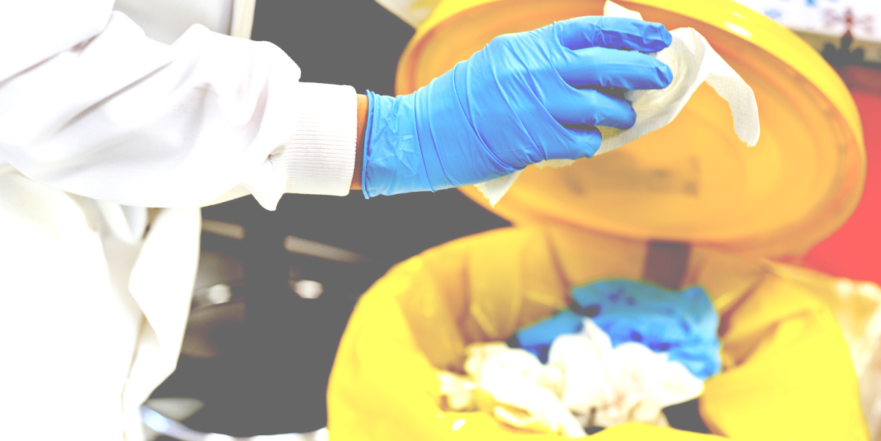When working with hazardous wastes like solvents, oils, and paints it is important to follow government-approved procedures for proper disposal. Improper disposal and clean-up of wastes can lead to harmful actions on the environment like increase in pollution and blockage of water drainage.
Improper disposal can also lead to the government forcing fines and other punishments upon you if you are found guilty. Something as simple as throwing out a rag could be considered improper disposal.
In this blog, we discuss why rags can be considered hazardous and how you can ensure that you safely dispose of them in a way that complies with local regulations.
When is a rag considered hazardous?
A rag can be considered hazardous when it comes into contact with a harmful waste. For example, when there is a waste spill, many individuals use a rag in order to clean up the mess.
The rag, however, becomes a hazardous material when the remains or dried waste are transferred to the rag. Without realizing it, many individuals will throw their rags in the normal recycling or garbage disposal where it is considered ‘not properly disposed of’.
The improper disposal of rags includes:
- Throwing in normal recycling or garbage services
- Leaving outside in the environment
- Failing to properly label rag as the right harmful waste
How to reuse and dispose of rags safely
Reusing rags is a very simple process that many individuals use to try to cut down on the purchasing costs of rags. The process involves submerging the rag in water completely and letting it air dry for two days. It is important to let the rag dry in a vented area where all the toxins can be released, so they are not harmful to the environment.
Meanwhile, proper disposal of rags can include a variety of different methods with each having the same intended goal. It’s important to effectively dispose of harmful wastes without affecting the environment or the general public.
The process of proper disposal of rags is simple:
- Identify the type of hazardous waste the rag is (what waste came into contact with the rag).
- Place the rag into a small metal container that prevents oxygen from getting inside.
- Pour water into the container to completely submerge the rag.
- Find your local garbage and recycling services and follow their instructions for proper hazardous waste disposal.
What are the results of improper disposal of rags?
Improper disposal of rags can be very impactful to the environment. Not only can hazardous rags release harmful toxins in the air, it could lead to other health safety concerns like fire. For example, if there is an oily rag that is not disposed of properly, it becomes a fire hazard as it can easily be ignited.
Furthermore, improper disposal of rags could lead to wildlife and marine life being harmed. Some animals will try to eat the hazardous rags or even be caught in them leaving them vulnerable.
Finally, the biggest impact improper disposal of rags containing waste has on the environment is the increase in greenhouse gasses. When rags are left out in the environment, the waste and remains on the rag are released into the air creating more greenhouse gasses. An increase in greenhouse gasses can lead to worsen effects of global warming and diminishing air quality for humans and animals to breathe.
How Maratek Environmental helps
Maratek Environmental is an extraction solution and recycling services company that helps industries, companies, and individuals with their solvent and waste needs.
For disposal of harmful wastes like hazardous rags, Maratek offers proper collection and disposal practices to dispose of these hazardous wastes. For high volumes of waste, Maratek offers companies to help setup and fill out HWIN mandatory information in order to help the government regulate hazardous waste.
Would you prefer to recover than dispose of hazardous waste?Maratek offers advanced and top-class technology from some of the most world-renowned engineers, helping companies build extraction solutions for certain solvents like oil/ethanol, MEK, toluene, and more!
Maratek also offers a program called “Share the Savings” where companies are not required to put down any money, capital investments, or risks. Simply allow Maratek to install their equipment for a reduced price and split the recovered solvents 50/50.
Want to start saving and cutting down on solvent costs? Contact us today to learn more!

